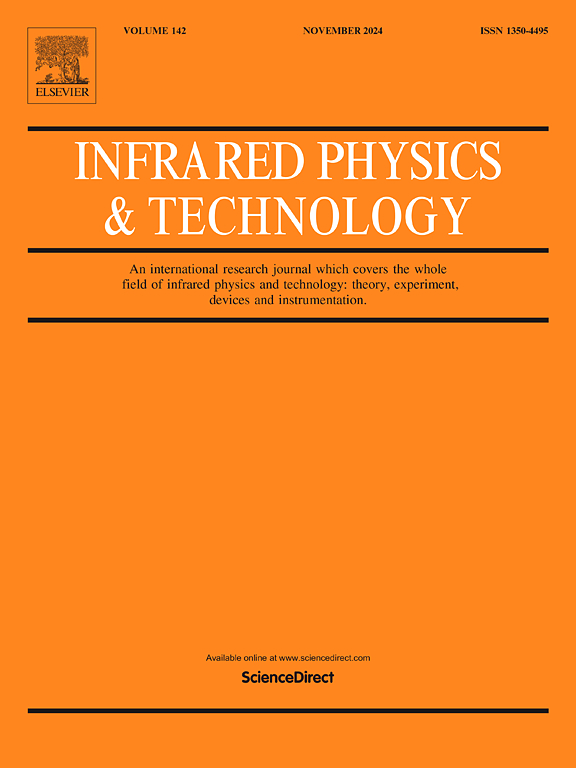Dual-wavelength twin-pulse laser with tunable intensity and delay at 912 nm & 1064 nm under intracavity gain-switched pumping
IF 3.1
3区 物理与天体物理
Q2 INSTRUMENTS & INSTRUMENTATION
引用次数: 0
Abstract
We report a dual-wavelength twin-pulse laser with tunable intensity and delay at 912 nm & 1064 nm with compactly combined Nd:GdVO4 and Nd:YVO4 crystals under intracavity gain-switched pumping. According to reports, this system was the first to eliminate gain competition between 912 nm & 1064 nm dual-wavelength twin-pulse laser. It also enabled intensity and delay control between the dual-wavelength twin-pulse by changing the absorbed pump power. The experimental findings revealed that the dual-wavelength twin-pulse laser attained the threshold of the absorbed pump power at 14.22 W. Further increasing the absorbed pump power, the intensity of the dual-wavelength twin-pulse increased, and the delay decreased accordingly. As a result, dual-wavelength twin-pulse with an intensity ratio of 0.89 to 1.37 and a delay of 21 ns to 7 ns were obtained. Under the maximum absorbed pump power of 16.77 W, the dual-wavelength twin-pulse laser achieved an average output power of 510 mW, with 215 mW for the 912 nm laser and 295 mW for the 1064 nm laser. The overall slope efficiency was 16.7 %. The maximum repetition rate was 30.07 kHz, the pulse width at 912 nm was 48.59 ns, and the pulse width at 1064 nm was 37.98 ns.
求助全文
约1分钟内获得全文
求助全文
来源期刊
CiteScore
5.70
自引率
12.10%
发文量
400
审稿时长
67 days
期刊介绍:
The Journal covers the entire field of infrared physics and technology: theory, experiment, application, devices and instrumentation. Infrared'' is defined as covering the near, mid and far infrared (terahertz) regions from 0.75um (750nm) to 1mm (300GHz.) Submissions in the 300GHz to 100GHz region may be accepted at the editors discretion if their content is relevant to shorter wavelengths. Submissions must be primarily concerned with and directly relevant to this spectral region.
Its core topics can be summarized as the generation, propagation and detection, of infrared radiation; the associated optics, materials and devices; and its use in all fields of science, industry, engineering and medicine.
Infrared techniques occur in many different fields, notably spectroscopy and interferometry; material characterization and processing; atmospheric physics, astronomy and space research. Scientific aspects include lasers, quantum optics, quantum electronics, image processing and semiconductor physics. Some important applications are medical diagnostics and treatment, industrial inspection and environmental monitoring.

 求助内容:
求助内容: 应助结果提醒方式:
应助结果提醒方式:


